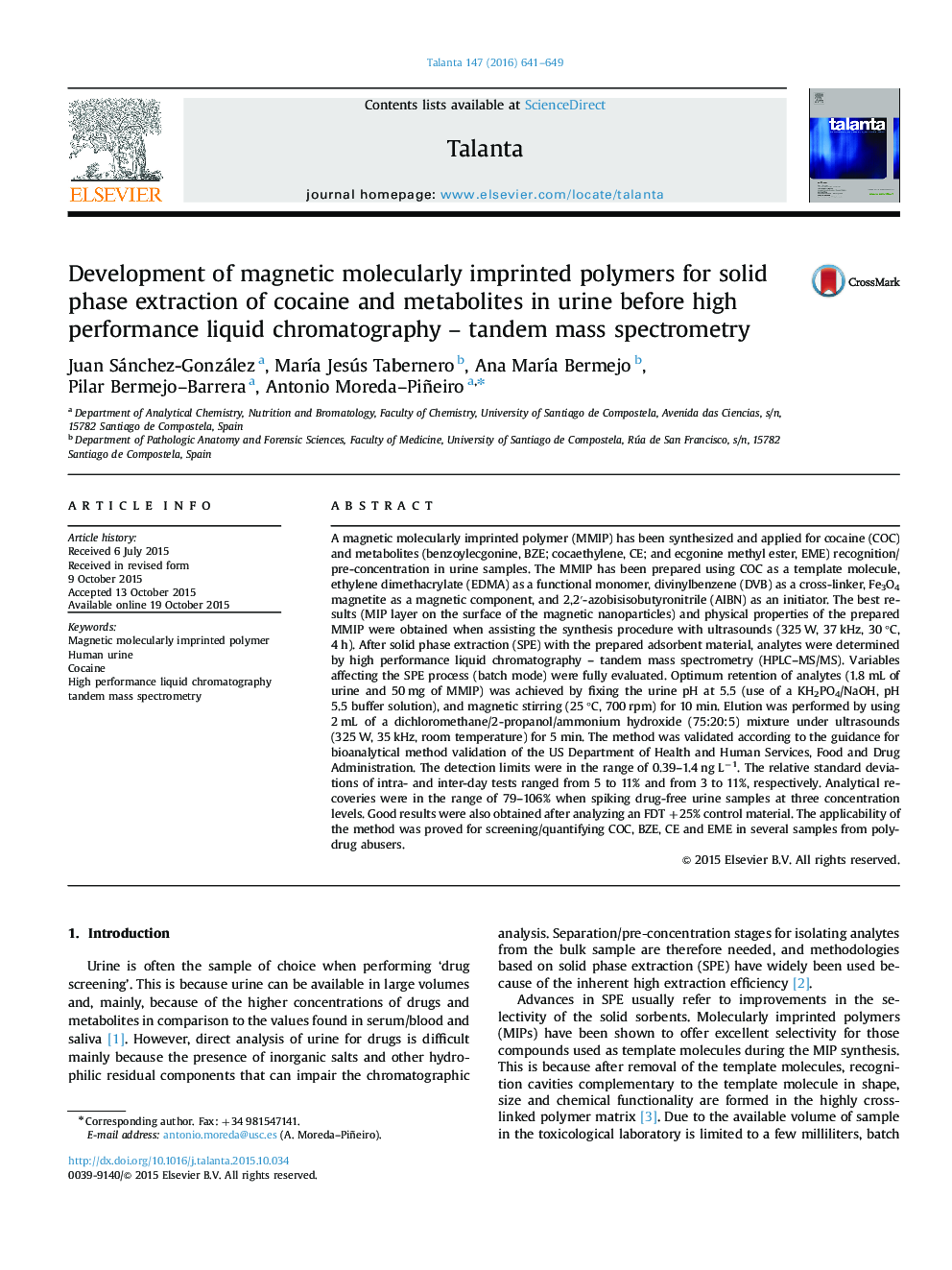| کد مقاله | کد نشریه | سال انتشار | مقاله انگلیسی | نسخه تمام متن |
|---|---|---|---|---|
| 1242805 | 1495788 | 2016 | 9 صفحه PDF | دانلود رایگان |

• Ultrasounds for synthesizing of magnetic molecularly imprinted polymers (MMIP).
• MMIP for cocaine and metabolites recognition.
• Fast cocaine and metabolites determination in urine by reverse phase HPLC-MS/MS.
• Limit of quantification lower than the cut-off values for confirmation analysis.
A magnetic molecularly imprinted polymer (MMIP) has been synthesized and applied for cocaine (COC) and metabolites (benzoylecgonine, BZE; cocaethylene, CE; and ecgonine methyl ester, EME) recognition/pre-concentration in urine samples. The MMIP has been prepared using COC as a template molecule, ethylene dimethacrylate (EDMA) as a functional monomer, divinylbenzene (DVB) as a cross-linker, Fe3O4 magnetite as a magnetic component, and 2,2′-azobisisobutyronitrile (AIBN) as an initiator. The best results (MIP layer on the surface of the magnetic nanoparticles) and physical properties of the prepared MMIP were obtained when assisting the synthesis procedure with ultrasounds (325 W, 37 kHz, 30 °C, 4 h). After solid phase extraction (SPE) with the prepared adsorbent material, analytes were determined by high performance liquid chromatography – tandem mass spectrometry (HPLC–MS/MS). Variables affecting the SPE process (batch mode) were fully evaluated. Optimum retention of analytes (1.8 mL of urine and 50 mg of MMIP) was achieved by fixing the urine pH at 5.5 (use of a KH2PO4/NaOH, pH 5.5 buffer solution), and magnetic stirring (25 °C, 700 rpm) for 10 min. Elution was performed by using 2 mL of a dichloromethane/2-propanol/ammonium hydroxide (75:20:5) mixture under ultrasounds (325 W, 35 kHz, room temperature) for 5 min. The method was validated according to the guidance for bioanalytical method validation of the US Department of Health and Human Services, Food and Drug Administration. The detection limits were in the range of 0.39–1.4 ng L−1. The relative standard deviations of intra- and inter-day tests ranged from 5 to 11% and from 3 to 11%, respectively. Analytical recoveries were in the range of 79–106% when spiking drug-free urine samples at three concentration levels. Good results were also obtained after analyzing an FDT +25% control material. The applicability of the method was proved for screening/quantifying COC, BZE, CE and EME in several samples from poly-drug abusers.
Figure optionsDownload as PowerPoint slide
Journal: Talanta - Volume 147, 15 January 2016, Pages 641–649